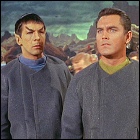 At Hollywood’s Desilu Studios, filming begins on The Cage, the unaired first attempt at a pilot episode of Gene Roddenberry’s science fiction series Star Trek. Starring Jeffrey Hunter as Captain Christopher Pike and Leonard Nimoy as the exotic-looking alien science officer Spock, filming proceeds at a brisk pace, despite numerous delays due to the show’s then-novel special effects, set and costuming requirements. Though the result is viewed enthusiastically by all involved, the completed pilot stirs little enthusiasm at the television networks. NBC thinks the series premise has promise, but that as it stands, The Cage is “too cerebral” for prime time. Ironically, exactly two years later, most of the footage from The Cage is broadcast anyway, as part of The Menagerie – a fast favorite among the viewers for whom it was deemed to be too brainy.
At Hollywood’s Desilu Studios, filming begins on The Cage, the unaired first attempt at a pilot episode of Gene Roddenberry’s science fiction series Star Trek. Starring Jeffrey Hunter as Captain Christopher Pike and Leonard Nimoy as the exotic-looking alien science officer Spock, filming proceeds at a brisk pace, despite numerous delays due to the show’s then-novel special effects, set and costuming requirements. Though the result is viewed enthusiastically by all involved, the completed pilot stirs little enthusiasm at the television networks. NBC thinks the series premise has promise, but that as it stands, The Cage is “too cerebral” for prime time. Ironically, exactly two years later, most of the footage from The Cage is broadcast anyway, as part of The Menagerie – a fast favorite among the viewers for whom it was deemed to be too brainy.
More about Star Trek in the LogBook
 ABC airs the 38th episode of Leslie Stevens’ anthology series The Outer Limits. Eddie Albert and June Havoc star.
ABC airs the 38th episode of Leslie Stevens’ anthology series The Outer Limits. Eddie Albert and June Havoc star.
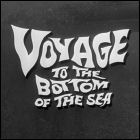 The seventh episode of Irwin Allen’s adventure series Voyage To The Bottom Of The Sea airs on ABC, starring Richard Basehart and David Hedison. Yvonne Craig (Batman) and Les Tremayne (Shazam!) guest star in an episode that reuses portions of the 1960 film The Lost World, which also featured Hedison, as a cost-cutting measure.
The seventh episode of Irwin Allen’s adventure series Voyage To The Bottom Of The Sea airs on ABC, starring Richard Basehart and David Hedison. Yvonne Craig (Batman) and Les Tremayne (Shazam!) guest star in an episode that reuses portions of the 1960 film The Lost World, which also featured Hedison, as a cost-cutting measure.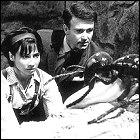 The 43rd episode of Doctor Who airs on the BBC, kicking off the series’ second season. This is part one of the story now collectively known as
The 43rd episode of Doctor Who airs on the BBC, kicking off the series’ second season. This is part one of the story now collectively known as 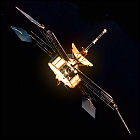 Though successfully launched, NASA’s
Though successfully launched, NASA’s 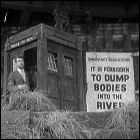 The 46th episode of Doctor Who airs on the BBC. This is part one of the story now collectively known as
The 46th episode of Doctor Who airs on the BBC. This is part one of the story now collectively known as  At Hollywood’s Desilu Studios, filming begins on
At Hollywood’s Desilu Studios, filming begins on  The 47th episode of Doctor Who airs on the BBC. This is part two of the story now collectively known as
The 47th episode of Doctor Who airs on the BBC. This is part two of the story now collectively known as 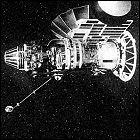 The Soviet Union launches the unmanned space probe Zond 2, intended to conduct the first close flyby of the planet Mars. Interplanetary exploration is still in its infancy, however, and just as Zond 1 failed mere weeks away from Venus, communication is lost with Zond 2 three months prior to its planned August 1965 encounter with the red planet. A backup of this spacecraft, Zond 3, will be launched in 1965, also failing to reach Mars but instead returning photos of Earth’s moon.
The Soviet Union launches the unmanned space probe Zond 2, intended to conduct the first close flyby of the planet Mars. Interplanetary exploration is still in its infancy, however, and just as Zond 1 failed mere weeks away from Venus, communication is lost with Zond 2 three months prior to its planned August 1965 encounter with the red planet. A backup of this spacecraft, Zond 3, will be launched in 1965, also failing to reach Mars but instead returning photos of Earth’s moon.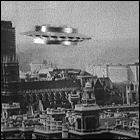 The 48th episode of Doctor Who airs on the BBC. This is part three of the story now collectively known as
The 48th episode of Doctor Who airs on the BBC. This is part three of the story now collectively known as  Halfway through filming on the Star Trek pilot episode,
Halfway through filming on the Star Trek pilot episode, 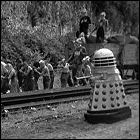 The 49th episode of Doctor Who airs on the BBC. This is part four of the story now collectively known as
The 49th episode of Doctor Who airs on the BBC. This is part four of the story now collectively known as 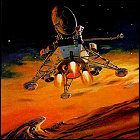 Following up on preliminary studies assuming almost-Earthlike conditions, NASA commences work on a major robotic interplanetary landing mission called Voyager, which will use a Saturn IB rocket to send an orbiter with two landers to Mars. But NASA is doing so without much help from its usual interplanetary think-tank, Jet Propulsion Laboratory, whose scientists warn NASA that the latest astronomical data suggests a significantly thinner atmosphere and lower atmospheric pressure than the scenario for which NASA is designing its vehicles. As the complexity involved in creating self-guided landers with on-board laboratories increases, contractors begin to insist that only a Saturn V will do; since all Saturn V boosters are currently in reserve for Apollo lunar missions, NASA pushes the Voyager mission back into the 1970s.
Following up on preliminary studies assuming almost-Earthlike conditions, NASA commences work on a major robotic interplanetary landing mission called Voyager, which will use a Saturn IB rocket to send an orbiter with two landers to Mars. But NASA is doing so without much help from its usual interplanetary think-tank, Jet Propulsion Laboratory, whose scientists warn NASA that the latest astronomical data suggests a significantly thinner atmosphere and lower atmospheric pressure than the scenario for which NASA is designing its vehicles. As the complexity involved in creating self-guided landers with on-board laboratories increases, contractors begin to insist that only a Saturn V will do; since all Saturn V boosters are currently in reserve for Apollo lunar missions, NASA pushes the Voyager mission back into the 1970s. The 50th episode of Doctor Who airs on the BBC. This is part five of the story now collectively known as
The 50th episode of Doctor Who airs on the BBC. This is part five of the story now collectively known as